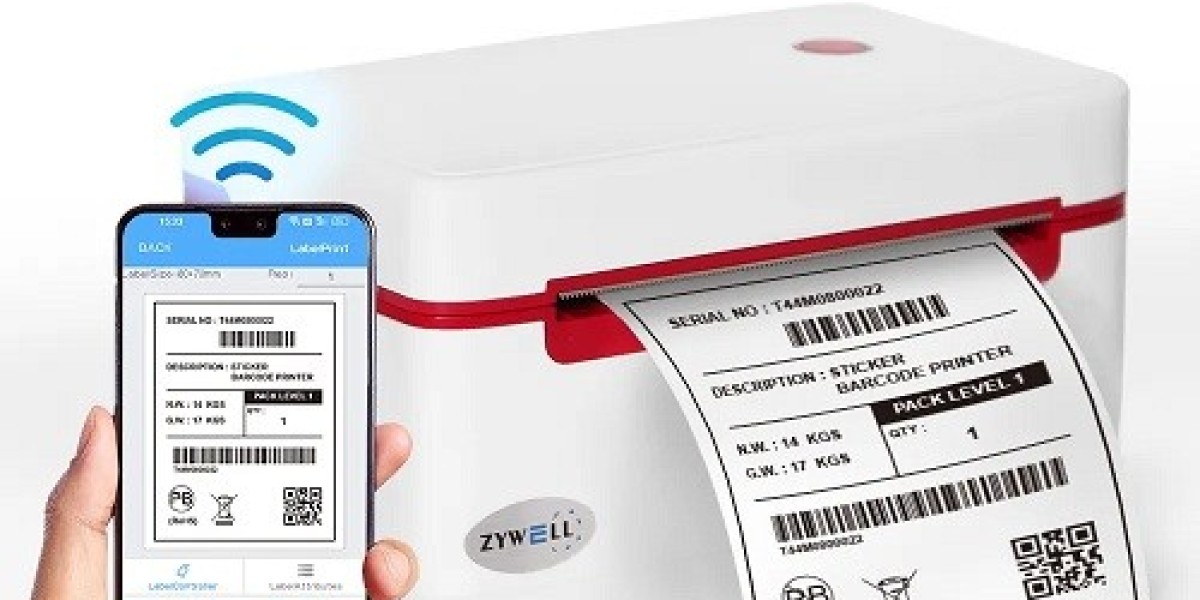Sticker thermal printers have gained immense popularity due to their efficiency, cost-effectiveness, and the simplicity with which they produce labels, stickers, barcodes, and receipts. Whether for small businesses, large companies, or even personal use, a sticker thermal printer offers an easy and reliable way to create adhesive stickers. In this article, we’ll explore how sticker thermal printers work, their advantages, and their use cases.
What is a Sticker Thermal Printer?
A sticker thermal printer is a specialized device that creates labels, barcodes, or stickers using a heat-sensitive process. Unlike traditional printers that use ink or toner, thermal printers rely on heat to create images on special paper or label material. This makes them ideal for producing durable and long-lasting labels without the need for additional consumables like ink cartridges.
How Does a Thermal Printer Work?
Thermal printers use either direct thermal or thermal transfer technology:
1. Direct Thermal Printing: In this method, the printer applies heat directly to the label material, which is coated with a heat-sensitive layer. The heat causes a chemical reaction in the paper, creating the desired image or text. While this method is cost-effective and straightforward, the labels produced can fade over time, especially when exposed to heat, light, or friction.
2. Thermal Transfer Printing: In thermal transfer printing, the printer uses a ribbon made of wax or resin that melts when heated, transferring the ink onto the sticker material. This method results in more durable labels, resistant to fading and suitable for harsh environments.
Types of Sticker Thermal Printers
Sticker thermal printers come in two primary types:
· Desktop Thermal Printers: These are compact and suitable for small to medium-sized businesses or home use. They are generally limited to printing smaller labels but are efficient and reliable for tasks such as shipping labels, barcodes, and product stickers.
· Industrial Thermal Printers: Designed for high-volume operations, industrial thermal printers are larger and more robust, capable of printing thousands of labels per day. They are often used in warehouses, factories, and logistics operations where speed and durability are crucial.
Benefits of Sticker Thermal Printers
1. Cost Efficiency
One of the primary advantages of thermal printers is the low cost of operation. Since there is no need for ink or toner, the only consumable required is the thermal paper or ribbon, depending on the type of printer. This reduces ongoing costs significantly.
2. Durability
Thermal printers are known for producing labels that are resistant to smudging and fading, especially with thermal transfer technology. This makes them ideal for environments where labels may be exposed to rough handling, moisture, or outdoor elements.
3. Speed and Efficiency
Thermal printers are faster than many traditional inkjet or laser printers, especially when printing large batches of labels. This is particularly beneficial for businesses that need to print thousands of labels in a short period, such as in shipping, logistics, or retail.
4. Compact and Versatile
Most desktop thermal printers are compact and easy to set up, making them suitable for small businesses or home offices. They are versatile enough to handle a wide range of printing tasks, from barcodes and product labels to custom stickers for branding purposes.
5. Environmentally Friendly
By eliminating the need for ink cartridges and toners, thermal printers contribute to reducing waste. The lack of disposable cartridges or ribbons (in direct thermal printers) also reduces environmental impact.
Key Features to Look for in a Sticker Thermal Printer
When selecting a sticker thermal printer, consider the following features to ensure it meets your needs:
1. Resolution
The resolution of the printer, measured in dots per inch (DPI), is essential for determining the quality of the printed label. A higher DPI results in sharper images and text, which is particularly important for small stickers or detailed graphics. A standard resolution is 203 DPI, but 300 or 600 DPI is preferable for high-quality prints.
2. Print Speed
Print speed is crucial, especially for high-volume tasks. Most thermal printers offer speeds between 4 to 12 inches per second (IPS). A faster printer will save time in environments where efficiency is paramount, such as warehouses or large retail stores.
3. Connectivity Options
Look for printers that offer multiple connectivity options, including USB, Ethernet, Bluetooth, and Wi-Fi. Wireless connectivity allows for more flexibility, enabling users to print from different devices like laptops, tablets, or smartphones.
4. Media Compatibility
Ensure the printer can handle the type and size of labels or stickers you plan to print. Some printers may only support specific materials or sizes, while others are versatile enough to handle a wide range of label types, including synthetic, paper, or vinyl materials.
5. Durability and Build Quality
If you need a printer for industrial use, look for a robust model designed to withstand harsh environments. Industrial printers are typically built with metal frames and have higher duty cycles, making them suitable for heavy usage.
Common Applications of Sticker Thermal Printers
Sticker thermal printers are widely used in various industries due to their versatility and efficiency. Some common applications include:
· Shipping Labels: Used extensively by e-commerce businesses and logistics companies for creating shipping and tracking labels.
· Product Labeling: Ideal for labeling retail products with barcodes, prices, and product descriptions.
· Barcode Printing: Used in inventory management, healthcare, and retail for printing barcodes to track products, medications, or assets.
· Custom Stickers: Popular among small businesses, artists, and hobbyists for creating personalized stickers for branding, packaging, or promotional purposes.
Conclusion
Sticker thermal printers are an excellent solution for businesses and individuals looking for a cost-effective, efficient, and environmentally friendly way to print labels and stickers. With various options available, from desktop models for small businesses to industrial printers for high-volume operations, thermal printers offer versatility, durability, and high-quality results. When choosing a thermal printer, consider factors like resolution, print speed, and connectivity to ensure it meets your specific needs.








